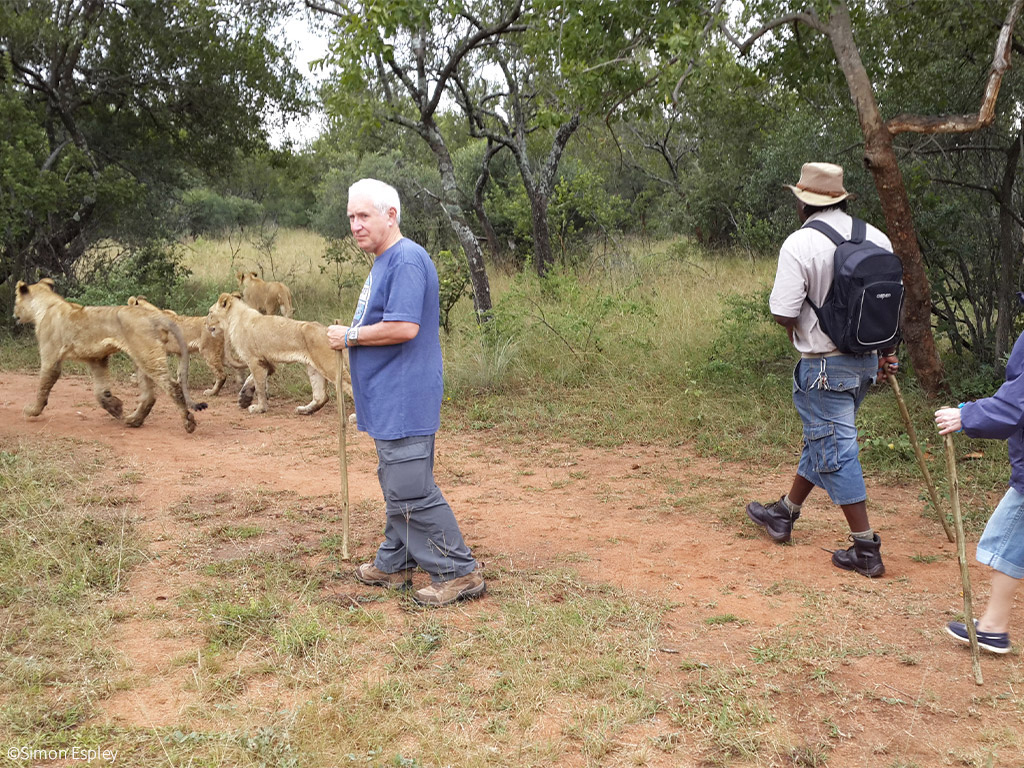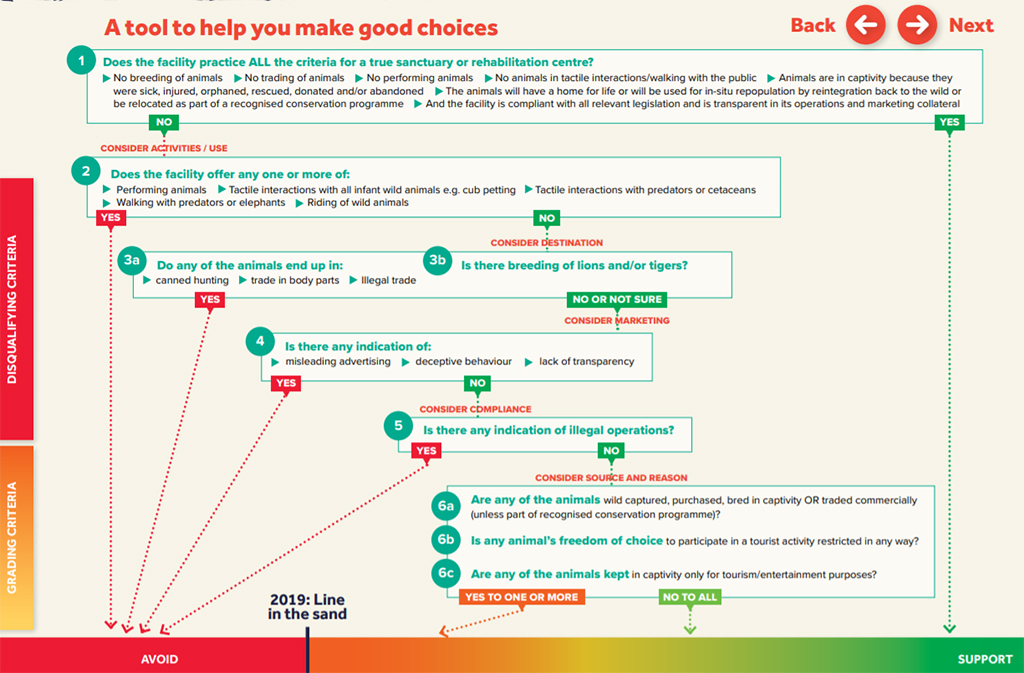
In past years, tourists have been grossly misled by certain commercial captive wildlife facilities masquerading as sanctuaries or rehabilitation centres. Gullible holidaymakers are attracted to such facilities, as paying day-visitors and voluntourists, who pay to work at the facilities. Also hoodwinked are kind souls who donate money to such facilities in the belief that they are ‘saving’ animals. Growing awareness of the false marketing being used, and changing ethical attitudes mean that it is incumbent on tourists and donors to ask the right questions of the places that they wish to visit and support. So how does one go about deciding which wildlife facilities to visit and support?
The South African Tourism Services Association (SATSA) has released a handy guide to help visitors make these decisions and, to simplify even further, there are a few activities that SASTA now recognises as ethically unacceptable and therefore to be boycotted – regardless of what you are told:
- if you can touch or play with the infants (lion or cheetah cub petting for example);
- if you are allowed to touch any predators or cetaceans (dolphins, whales or porpoises);
- if the facility has performing animals or if you can ride the animals (such as elephants);
- if the facility breeds lions or tigers.


You need to consider whether or not the facility is a true sanctuary or rehabilitation facility, and to answer that, you can look at the following aspects:
- There is no breeding of animals;
- They do not trade in animals;
- No animals are performing for entertainment
- There are no tactile interactions and no walking with the animals;
- The animals are in captivity because they were sick, injured, orphaned, rescued, donated and/or abandoned;
- The animals will have a home for life or will be relocated back into the wild as part of a recognised conservation initiative;
- And the facility is compliant with all relevant legislation and is transparent in its operations and marketing collateral
If the facility you are looking at visiting fulfils ALL of the above criteria, it is recognised as a sanctuary, and you can support it or visit with a clear conscience. If not, you need to dig deeper into the practices of the facility you wish to visit, or walk away.
The full flowchart is included below, and you will see that the guide also raises relatively obvious points such as not supporting a facility where the animals end up at canned hunting operations or where their body parts are traded. Naturally, this may be difficult for an unsuspecting visitor to discern. Captive wildlife facilities that are involved in unethical practices are unlikely to be upfront about their true colours, so visitors are advised to make sure that they are fully informed and have done their research beforehand. The SATSA guideline are a good place to start.

The full report, including the history and guiding principles behind this chart, can be found here.
To comment on this story: Login (or sign up) to our app here - it's a troll-free safe place 🙂.![]()






